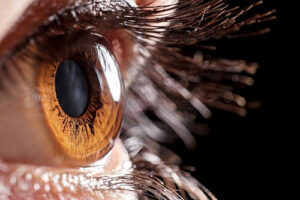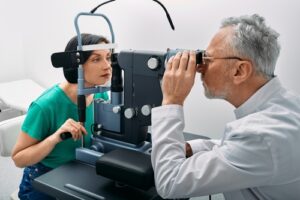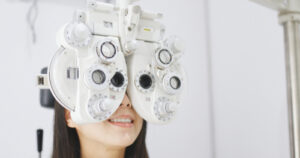Both keratoconus and astigmatism affect the same part of the eye: the cornea. The cornea is the clear dome-shaped structure at the front of the eye.
Both conditions also can cause blurry vision or distorted vision. However, there are several significant differences.
Keratoconus and astigmatism are both treatable conditions. However, they are also typically treated using different methods.
Identifying the exact source of blurry vision is necessary for a successful outcome. Keep reading to learn about the difference between keratoconus and astigmatism!

What Is Keratoconus?
Keratoconus is an eye condition that occurs when the cornea begins to bulge and form more of a cone shape instead of a natural sphere shape. The cornea performs many functions, one of those being helping to focus light.
With keratoconus, the cornea becomes steeper over time. The center of the cornea is made of collagen.
Collagen is a protein that provides structure. When you have keratoconus, the cornea thins, gradually creating a bulge.

This condition progresses slowly over time, often over a period of ten years or longer. At first, you may notice a mild degree of blurring in your vision.
As the eye condition progresses, you may have increasing trouble seeing at night. You can also experience worsening glare and halos around light sources.
Headaches, eye pain, and light sensitivity are also symptoms of keratoconus. For most people, keratoconus affects both eyes, although it may affect one eye more significantly than the other.
The exact cause of keratoconus is not yet fully understood. It usually affects people around the ages of ten to twenty-five.
A family history of keratoconus puts you at a higher risk, as does chronic eye inflammation, like allergies. Chronic eye rubbing has also been linked to keratoconus.
What Is Astigmatism?
Most people are more familiar with astigmatism than keratoconus. This is primarily because astigmatism is more common.
In fact, one in three people has astigmatism. Astigmatism is a kind of refractive error that occurs when the cornea is irregular.
Specifically, the curvature is more like a football rather than a sphere.
As with keratoconus, this irregular shape cannot focus light properly onto the retina, which leads to blurry vision.
In addition to blurry vision, symptoms of astigmatism include eye strain, headaches, and difficulty seeing at night. Some people with astigmatism also find themselves squinting to try to see better.
It is possible to have astigmatism and also be nearsighted or farsighted.
You may be born with astigmatism. You can also develop it as a child or adult.
Eye injury, surgery, and eye disease can all result in the development of astigmatism.
How Are Keratoconus and Astigmatism Diagnosed and Treated?
Both keratoconus and astigmatism can be diagnosed during a comprehensive eye exam. In addition to discussing your personal and family medical history, the doctor will conduct a thorough examination of your eyes and vision.

To determine how well you are seeing, your eye doctor will ask you to read off an eye chart and look through a phoropter. This is a machine that determines the right prescription for you.
A keratometer may be used to measure the curvature of your eye. A corneal topography scan also allows your eye doctor to detect imperfections on your eye’s surface.
Keratoconus Treatment
The first course of treatment for keratoconus is typically glasses or contact lenses. In the initial stages, this is usually sufficient to offset blurriness caused by the condition.
When that is no longer sufficient, a hard contact lens may be recommended, to reduce irregularities on the eye’s surface. This treatment method will not stop the condition from progressing but can help improve vision.

When keratoconus reaches the intermediate stages, corneal collagen cross-linking can be an effective treatment. This treatment involves applying a vitamin B solution to the eye, which stimulates the production of collagen.
Corneal cross-linking can improve the structure of the cornea and help stop the eye condition from worsening. However, the corneal cross linking procedure does not aim to improve vision.
In severe cases, keratoconus can be treated with a corneal ring or corneal transplant. With a corneal ring, a lens is implanted to reduce the bulge.
During a corneal transplant, a cornea affected by keratoconus is replaced with a healthy one from a donor.
Astigmatism Treatment
As with keratoconus, astigmatism is often first treated with contact lenses or glasses. With astigmatism, this is often sufficient.
You may need to update your prescription if your vision changes over time. For astigmatism, alternate treatment methods like corneal collagen cross-linking or a corneal ring are not required.
If you want to see clearly without having to wear glasses or contacts, LASIK can be a permanent solution for astigmatism. This reshapes the cornea so that it can bend light properly.
However, LASIK is not a proper treatment method for vision issues associated with keratoconus. Having keratoconus may even disqualify you as a candidate for LASIK.
Since both keratoconus and astigmatism are treatable, there is no reason for you to live with blurry vision and other symptoms caused by these conditions any longer.
Are you experiencing blurry or distorted vision? Schedule an appointment at Cheema MD Eye Care in Kingston, NY, today!



